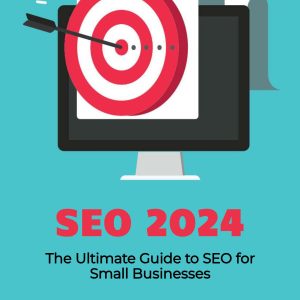How to Identify and Solve Website Issues for Your Small Business
As a small business owner, your website is a crucial tool for reaching customers and growing your business. However, like any tool, it can encounter issues that hinder its performance and effectiveness. In this blog post, we will explore the common website issues faced by small businesses and provide practical solutions to help you overcome them.
1. Slow Loading Speed
One of the most common website issues is slow loading speed. In today’s fast-paced digital world, users expect websites to load quickly. If your website takes too long to load, visitors may become frustrated and leave before even seeing your content. Here are some steps you can take to address this issue:
– Optimise Images: Large image files can significantly slow down your website. Use image compression tools to reduce their size without compromising quality.
– Minimise Plugins: While plugins can add functionality to your website, having too many can weigh it down. Remove any unnecessary plugins and keep only those essential for your site’s performance.
– Enable Caching: Caching stores a static version of your web pages, reducing the need for server processing and improving loading times.
2. Poor Mobile Responsiveness
With the increasing use of mobile devices, it is essential that your website is optimised for mobile viewing. A poorly responsive website on mobile devices can lead to a frustrating user experience and drive potential customers away.
To improve mobile responsiveness:
– Use Responsive Design: Ensure that your website is built using responsive design principles so that it automatically adjusts to different screen sizes.
– Test on Multiple Devices: Regularly test your website on various devices to ensure consistent performance across different platforms.
– Simplify Navigation: Make sure that menus and buttons are easy to navigate on smaller screens, allowing users to find what they need quickly.

3. Lack of Clear Call-to-Action (CTA)
A clear call-to-action (CTA) is crucial for guiding visitors towards the desired action, such as making a purchase or contacting you. Without a clear CTA, visitors may leave your website without taking any action. To improve your website’s CTAs:
– Use Action-oriented Language: Use strong and compelling verbs to prompt users to take action, such as Buy Now, Sign Up, or Contact Us.
– Place CTAs Strategically: Position your CTAs prominently on your website, ensuring they are easily visible and accessible.
– Offer Incentives: Provide incentives, such as discounts or free trials, to encourage visitors to take immediate action.
4. Lack of Search Engine Optimisation (SEO)
Having a well-designed website is not enough if it doesn’t appear in search engine results. Implementing effective SEO strategies can help improve your website’s visibility and attract organic traffic. Here are some SEO techniques to consider:
– Keyword Research: Identify relevant keywords that potential customers are likely to use when searching for products or services similar to yours.
– On-page Optimisation: Optimise your website’s meta tags, headings, and content with the identified keywords to improve its search engine ranking.
– Build Quality Backlinks: Earn backlinks from reputable websites in your industry to enhance your website’s authority and visibility.

5. Inadequate Content
Content plays a vital role in engaging visitors and establishing your expertise in your industry. If your website lacks valuable and informative content, visitors may not find a reason to stay or return. To improve your website’s content:
– Understand Your Audience: Research your target audience’s needs and preferences to create content that resonates with them.
– Create Engaging Blog Posts: Publish regular blog posts that provide valuable insights, tips, and industry updates to keep visitors coming back for more.
– Incorporate Visuals: Use images, videos, infographics, and other visual elements to enhance the appeal of your content.
In conclusion, identifying and solving website issues is essential for small businesses to maximise their online presence and attract customers. By addressing common issues such as slow loading speed, poor mobile responsiveness, lack of clear CTAs, inadequate SEO, and inadequate content, you can create a website that not only looks great but also performs optimally.
Remember, your website is a powerful tool for growth, and investing time and effort in its maintenance will yield long-term benefits for your small business.
Want to know how well your website is performing? Start here:
If your website is not performing as it should and you have no idea why, we can help! Choose from one of the 3 options below.










